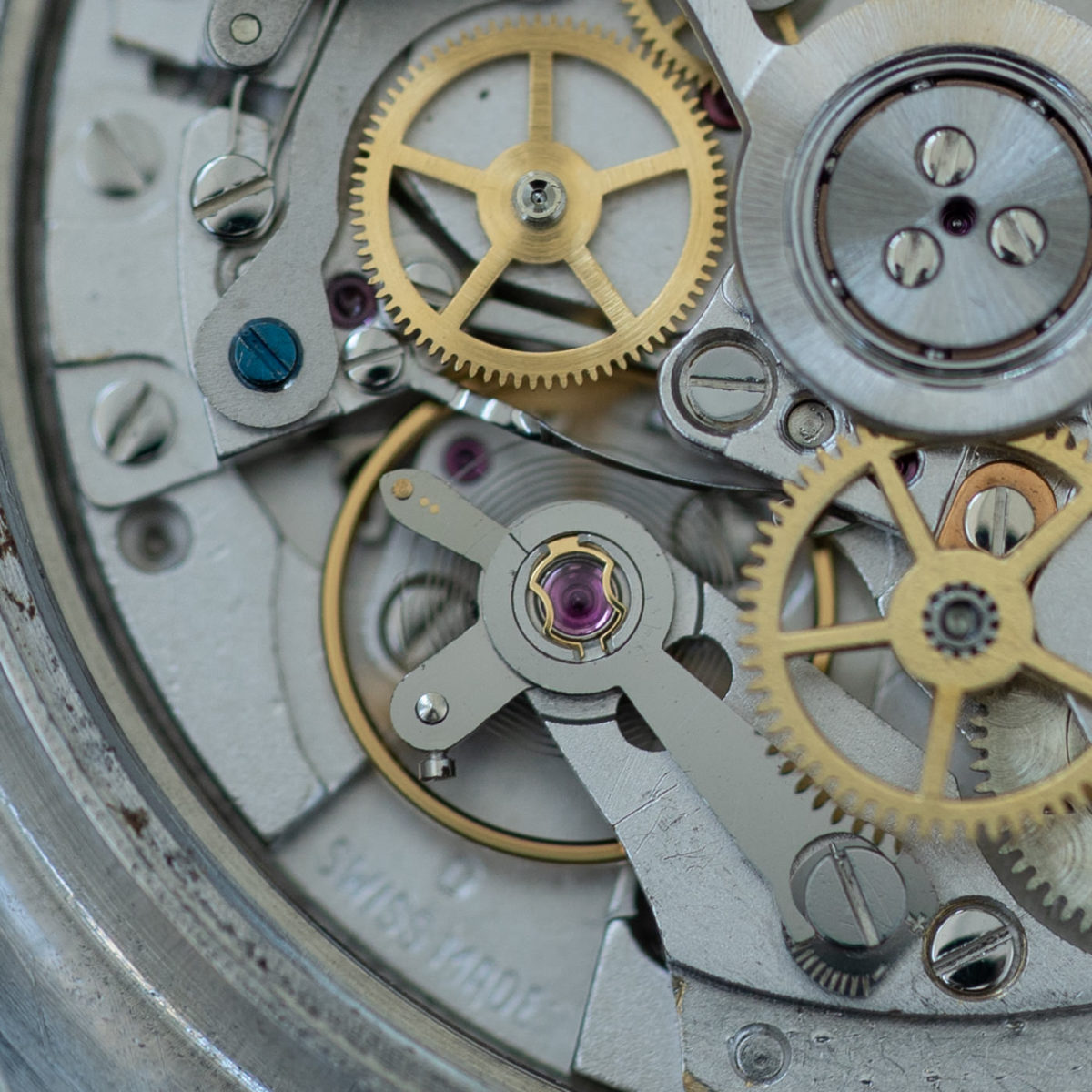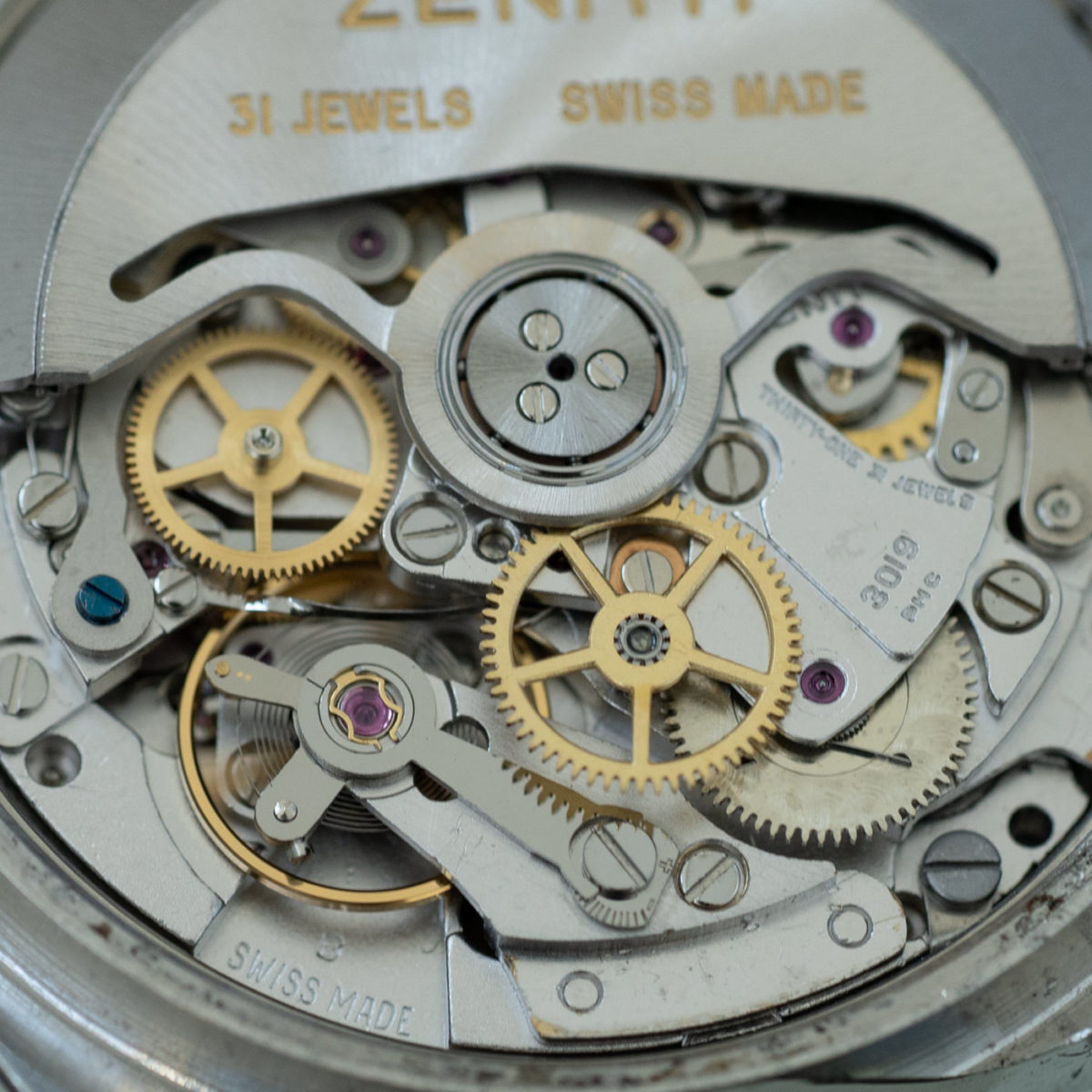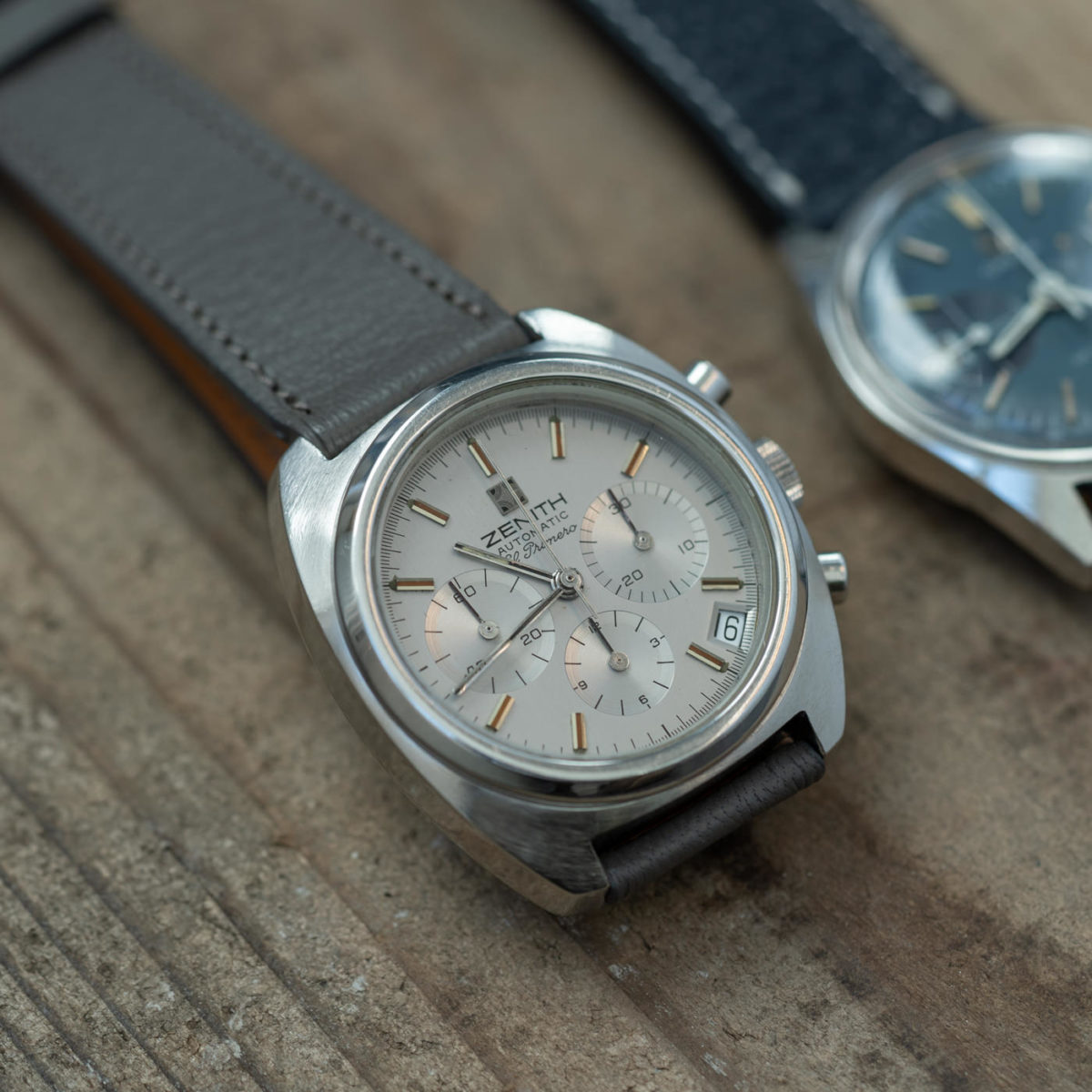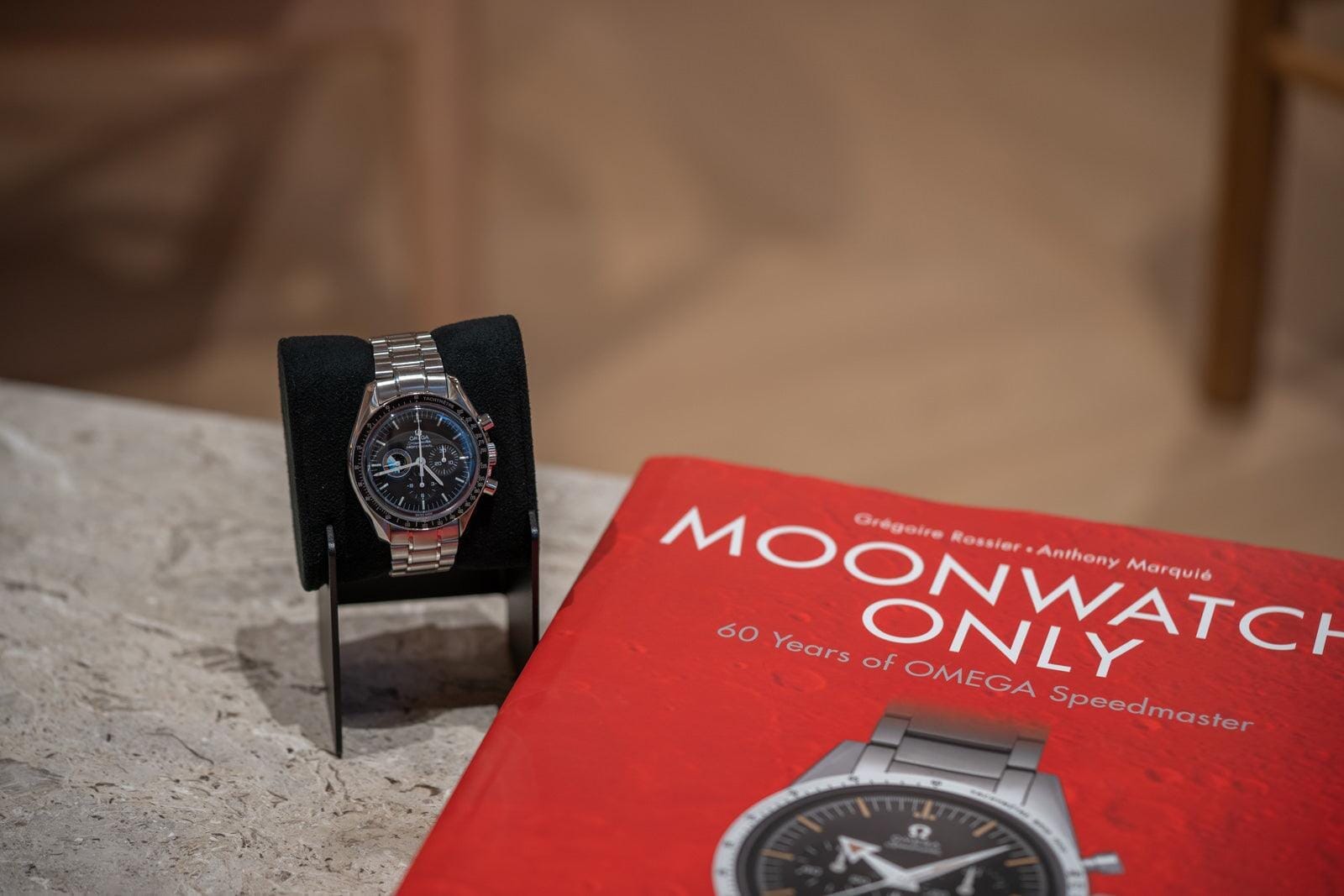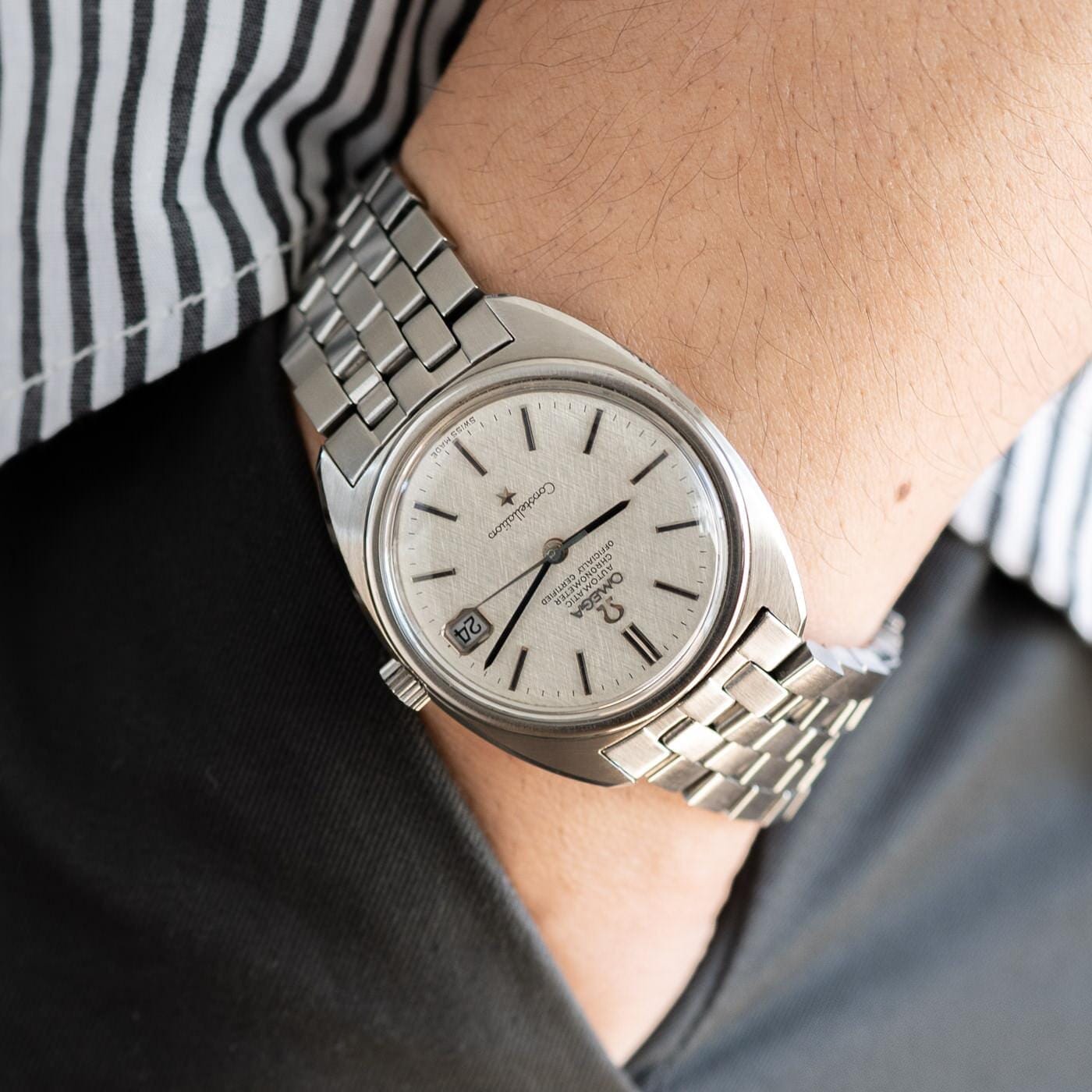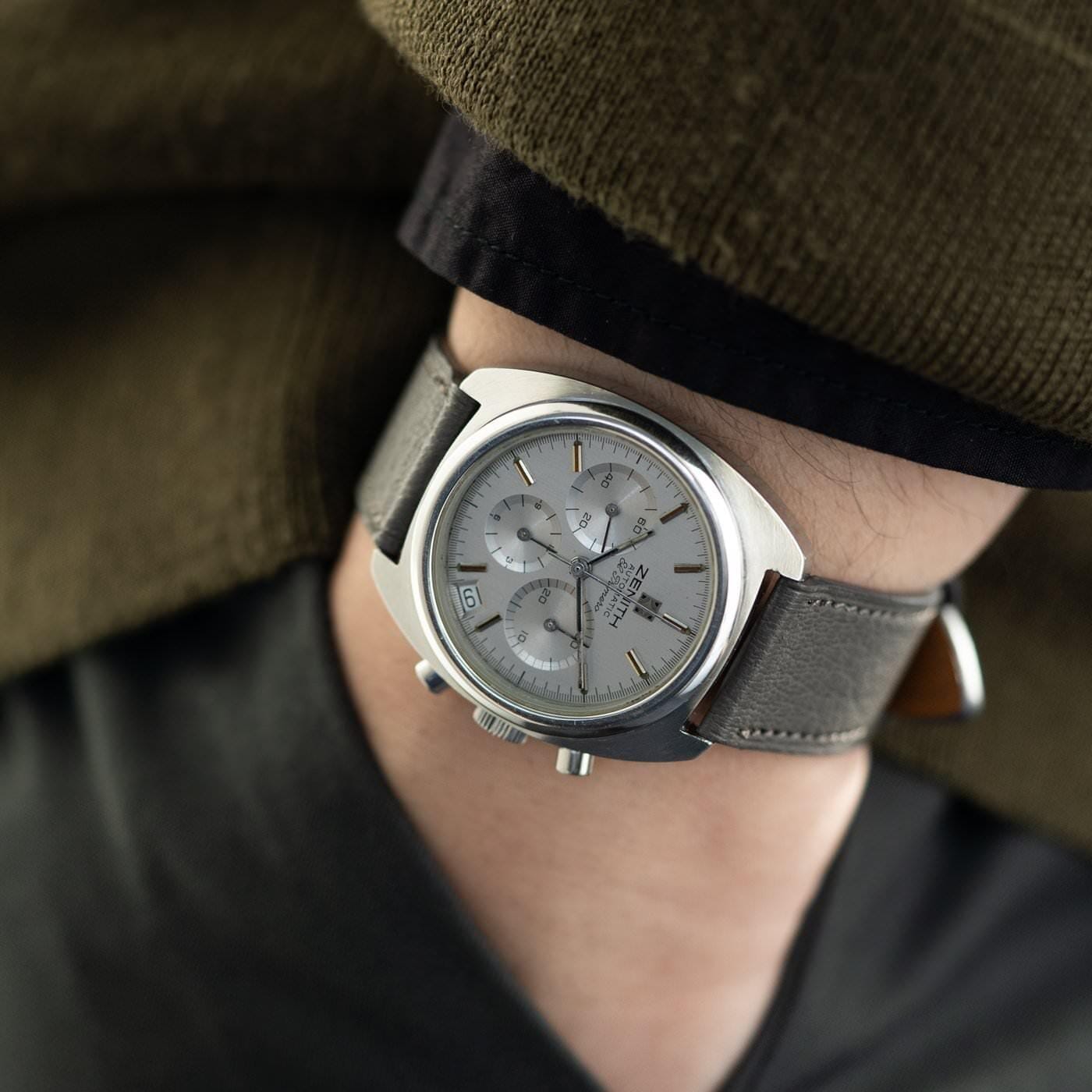
Chronograph history and ZENITH El Primero 3019PHC
To briefly mention Zenith, a manufacturer that does everything from designing to manufacturing parts and movements in-house is called a "manufacture", and Zenith is this manufacturer.
I think it's good to say that it is a manufacture that you can mainly make all the movements from scratch in-house.
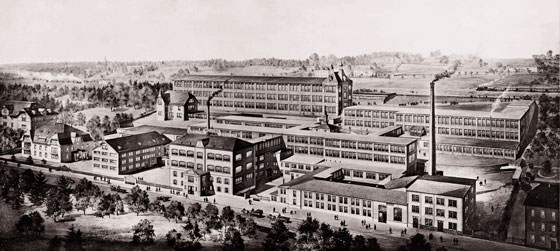
Recently, the number of brands that call themselves the Manufacture is increasing, but there were not many brands that could be called the Manufacture at that time, such as LONGINES Longines, Jaeger Lecoultre, and ZENITH Zenith.
That's why the movement was a movement, and the case was a case.
Speaking of Zenith, this movement has become synonymous with Zenith so much that the word "El Primero" comes to mind.
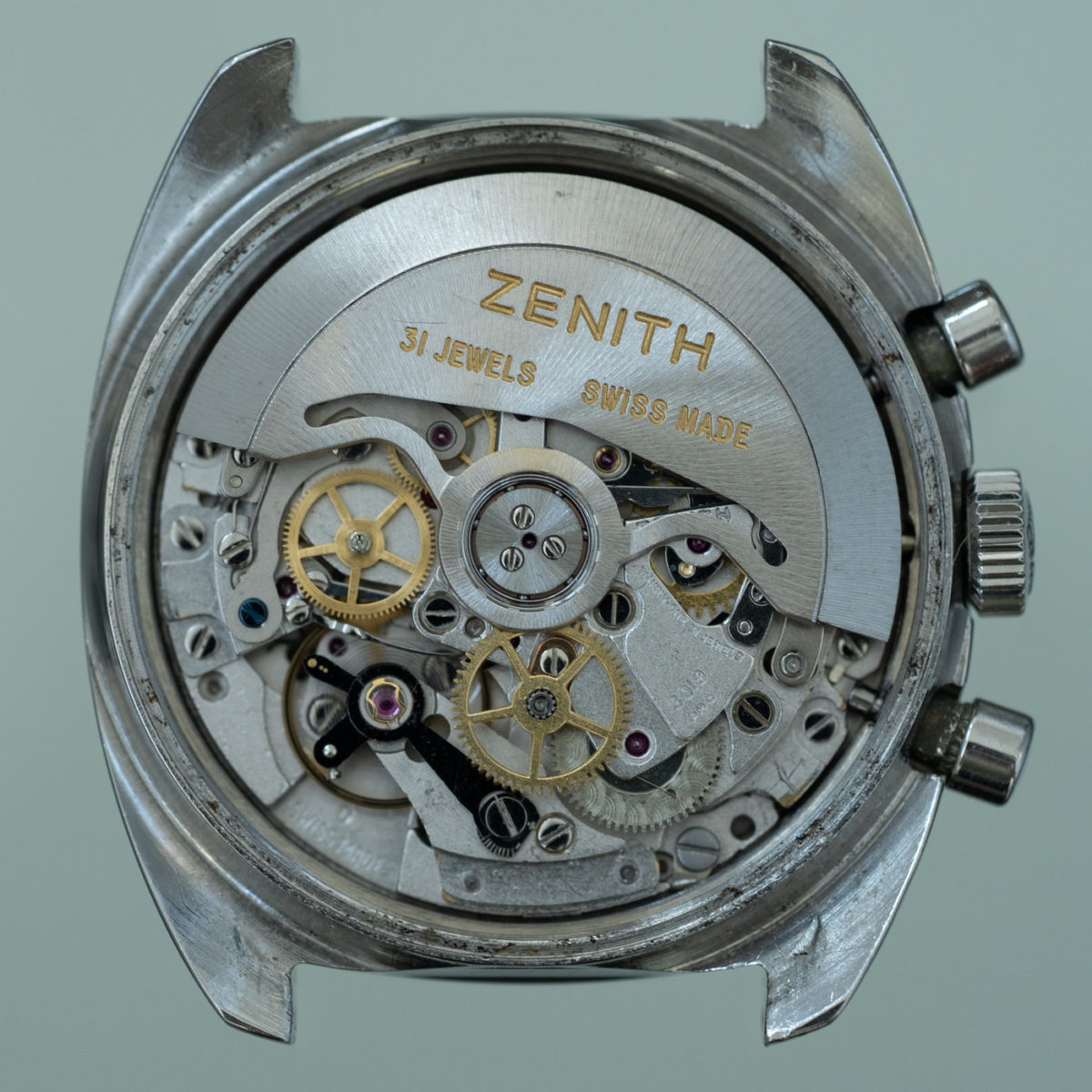
Introduced in 1969, "El Primero", one of the world's first self-winding chronographs, has the name of the movement as it is.
By the way, "El Primero" means El Primero, which means "first" in Esperanto. (The First in English)
Introducing what kind of historical background this movement was born from.
History of chronographs
First of all, what is a chronograph is a watch with a stopwatch function. The chronograph was first invented as far back as the early 1800s, and it is said that the Frenchman Loius Moinet invented the chronograph for astronomical observation.

Loius Moinet ... produced in 1816 the first execution of the chronograph
The chronograph for wristwatches first appeared in 1913 with the "Cal.13.33Z" developed by LONGINES Longines. Until then, only pocket watches had a chronograph function, but Longines succeeded in developing the world's first chronograph for wristwatches.
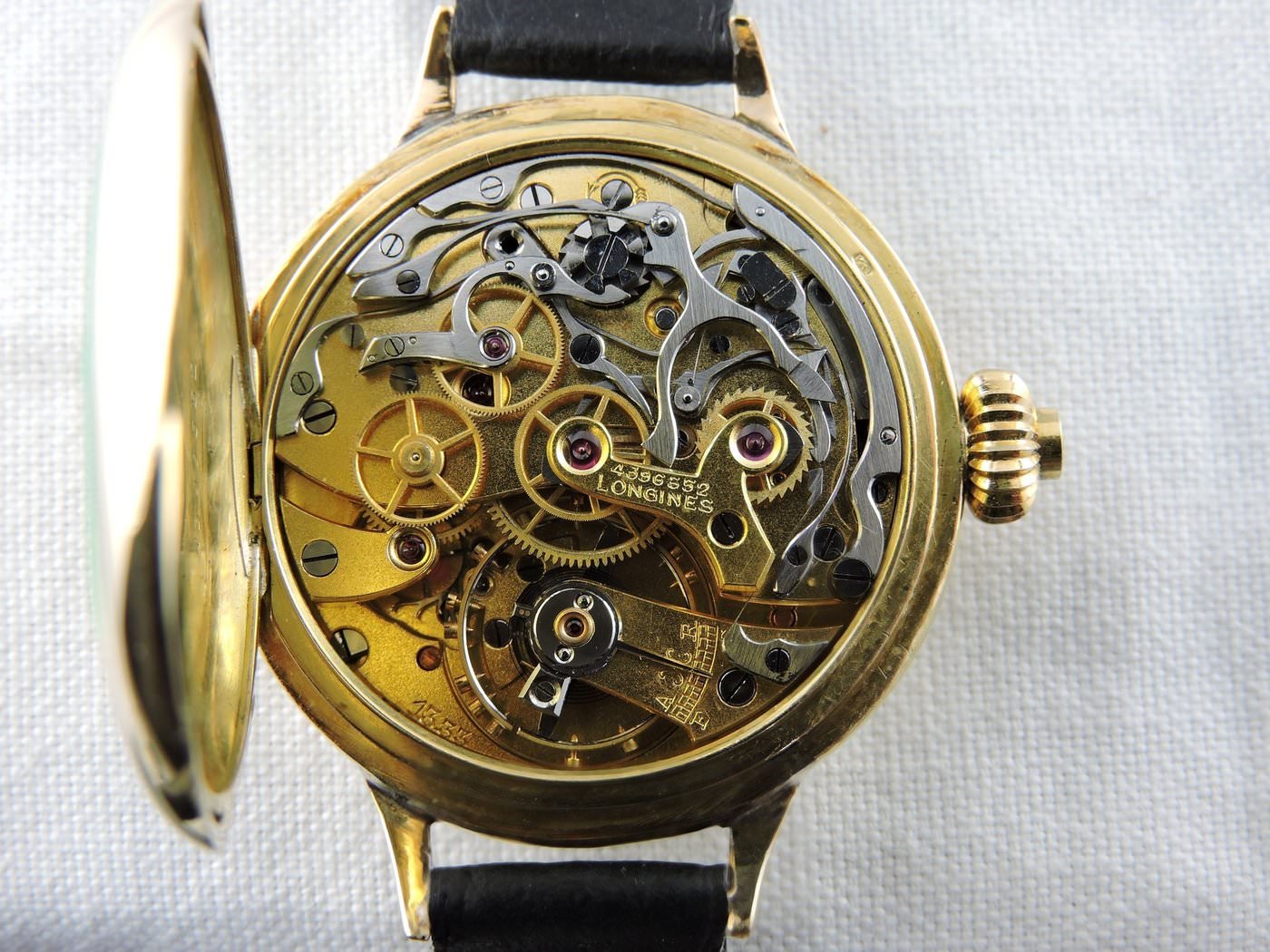
Source http://www.chronocentric.com/forums/chronotrader/index.cgi?md=read;id=81154
By the way, Breitling also developed a wristwatch chronograph in 1915
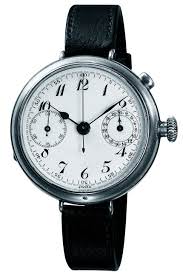
Breitling first Wrist Chronograph (1915)
This was a wristwatch with a push button for chronograph like Longines Cal.13.33Z, which was jointly developed with Marcel Depra, the founder of Dubois Depra.
The chronograph mechanism is complicated and very difficult to miniaturize, but it is Longines, a manufacturer that has been manufacturing watches since 1832. We have succeeded in reducing the size of a pocket watch chronograph to the size of a wristwatch. The
chronograph has evolved significantly in the early 1900s, when aircraft first appeared, when pilots needed it to calculate fuel, especially for air force pilots during World War I. Functions have been developed (such as a 30-minute counter), and what used to be a simple stopwatch function has become possible to perform more complicated calculations.
Maybe it's not a mistake to say that Longines is the reason why I enjoy chronograph watches. However, it is said that there was a request to manufacture a chronograph wristwatch because the world situation is near World War I behind the development of this watch.
As with all ages, ironically, war is evolving various things. Nowadays, GPS and the Internet, which are used by people all over the world, are the same.
When you think about it, you can imagine that it was quite epoch-making that the function that was only available in pocket watches at that time could be used as a wristwatch.
Birth of a self-winding chronograph
Self-winding wristwatches have gradually become widespread since the 1930s, while self-winding chronographs have become more popular due to reduced munitions demand. Later.
Until the mid-1960s, when self-winding chronographs appeared, chronographs were hand-wound chronograph movements, but chronograph machines are so complicated that they are difficult to design and manufacture. There were only a few manufacturers that could make it expensive.
In addition to LONGINES Longines, Venus Venus, Landeron Landeron, Angelus Angelus, Valjoux Valjoux, Lemania Lemania, Exelsior Park, etc.
Especially Valjoux and Lemania are famous.
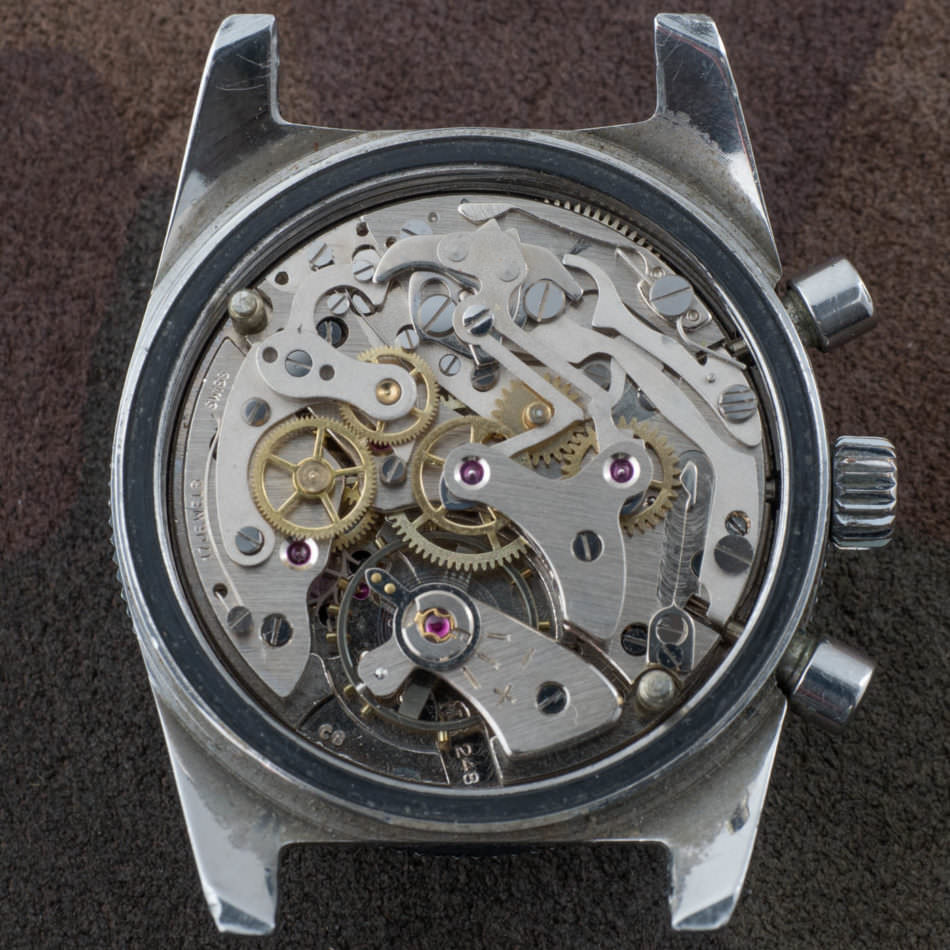
Cal.248 (Landeron 248)
What happened to other manufacturers who couldn't produce their own chronograph movements? They bought a semi-finished product called "Evoche" produced by the above manufacturers, and each manufacturer put their hands on it and made it in-house. I put it on my watch.
Valjoux Valjoux is a typical Evoche maker, and the movement of Valjoux is used as it is in chronograph watches of the 1970s, but the product names at the time of sale are those of various manufacturers. There are many watches.
In the 1960s, groups such as Heuer, Breitling, Hamilton (Breitling, Hamilton-Buren, Dubois Depra, Heuer Leonidas) played "Cal.11", and in Japan, SEIKO played "Cal.6139". , And ZENITH MOVADO was competing for the development of a self-winding chronograph called "Cal.3019PHC (El Primero)".
The movement "Cal.11", which is also included in Heuer's Otavia, was developed by a coalition of four companies in 1965, and in March 1969, the movement of Cal.11 was named "chronomatic". I made an announcement.

Cal.11
At the same time in Japan, Seiko was developing a chronograph called Cal.6138, so since the beginning of the 1960s, there is a history of fierce competition between the two groups and Seiko.
Zenith Movado was also developing in the mid-1960s, but it is said that the announcement was made in 1969.
There are still various theories about which movement was developed and announced earliest, so I don't know which one, but it seems certain that they all came out at about the same time. >
Even though these companies are competing for development, El Primero is very important as the earliest model of the self-winding chronograph.
Zenith bought a company called Martell at that time, and that company had a lot of technical chronographs because it was a wholesaler of the movement that is the basis of chronographs to Universal Geneve. It is said that we were able to advance the development in an advantageous manner because it was obtained.
By the way, 30 of 3019PHC seems to indicate that the diameter of the movement is 30mm.
And El Primero is famous for being used in ROLEX DAYTONA as well as Zenith watches.
The El Primero used in the Rolex Daytona is a little different from the pure El Primero move because it has been tuned by Rolex (low beat). By making it low beat, the wear of parts is suppressed and the durability is improved.
Also, because it was jointly developed by Zenith Mobard, it was sold under the name "El Primero" in Zenith but under the name "Datron HS360" in Mobard.
The earliest model of this Movado Datron HS360 is a fairly rare chronograph with a date at 12 o'clock. Subsequent models have a date display between 4 and 5 o'clock, similar to the Zenith El Primero 3019 PHC.
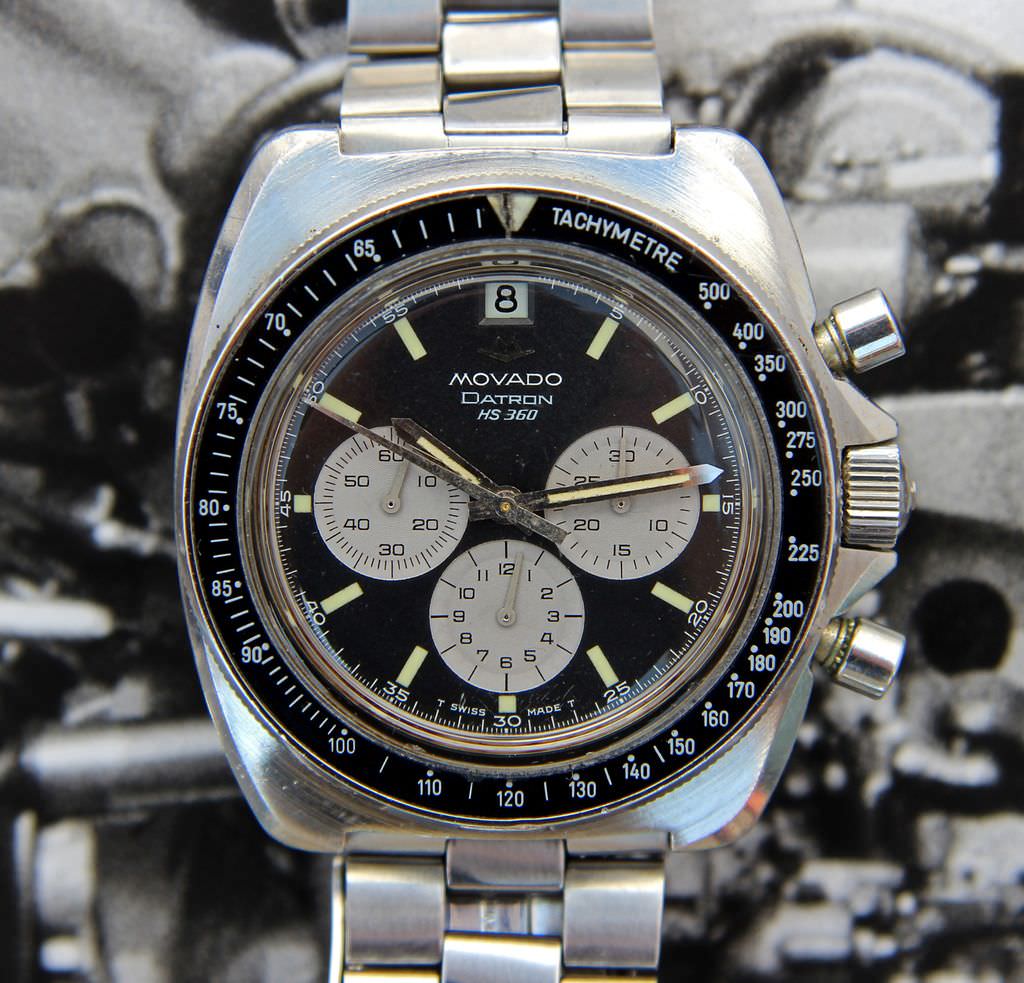
MOVADO Datron HS360
Source https://www.watchuseek.com/threads/fs-vintage-movado-datron-super-sub-sea-panda-chrono-w-original-gf-bracelet.4702821/ This is not well known because it contains the same machine as Datron HS360 under the name of Movado and Zenith El Primero, but it is highly evaluated among watch enthusiasts, so if you are interested, you may want to look for it. I don't.
I mentioned earlier that the self-winding chronograph movement was developed at the same time, but I don't know what the difference was.
In a nutshell, the characteristic of El Primero is its high beat (ultra-high vibration).
Ordinary watches have a movement of 28,800 vibrations / hour, "8 vibrations / second, the balance vibrates 8 times per second", but in the case of El Primero, it was a breakthrough at that time, 36,000. Vibration / hour A high beat design of "10 vibrations / second" was designed.
The advantage of high frequency is that it is easy to obtain accuracy, but the disadvantage is that parts are consumed and oil runs out faster.
These parts keep moving at high speed, so they wear out faster.
It's amazing that Zenith solved that problem by using a proprietary lubricating oil (a dry lubricant based on molybdenum sulfate). Even oil was researched and developed in the 1960s.
Another difference is that the chronograph movement has made the movement smaller. What will change with miniaturization? I think that.
That leads to the thinning of the case of the watch itself. As you can see when you actually bring it, it is quite thin considering the self-winding chronograph. Being miniaturized is advantageous not only in terms of thickness but also in terms of weight.
chronograph may have a thick and rugged image, but the El Primero 3019PHC can be worn like a regular watch. The size is small and light, so even if you've always wanted to wear a chronograph watch but have given up on it, I think it's a size and weight that doesn't matter.
In summary, the great thing about El Primero was that it was "the world's first self-winding chronograph movement with high beats and miniaturization."
Isn't it the movement that Rolex chose for Daytona?
And not only is it excellent as a movement, but the movement itself has a story.
I didn't write this time, but when the craftsman who worked on the movement called "Charles Belmo" at the time of the release of El Primero was ordered to discontinue production by the management in 1975 due to the Quartz shock, El There is also a movie-like story that a miraculous revival was made in 1985, 10 years later, by collecting the technical documents and tools necessary for producing Primero and secretly hiding it in the atelier's roof room. (For more information, here site is recommended)
Charles Vermot Charles Vermot
If Charles Belmo had all the technical documents and tools discarded without hiding them in the attic, El Primero would have been cut off in 1975.
The clock is not just a tool for checking the time, but it is also filled with various historical stories.
.
What is amazing about El Primero?
